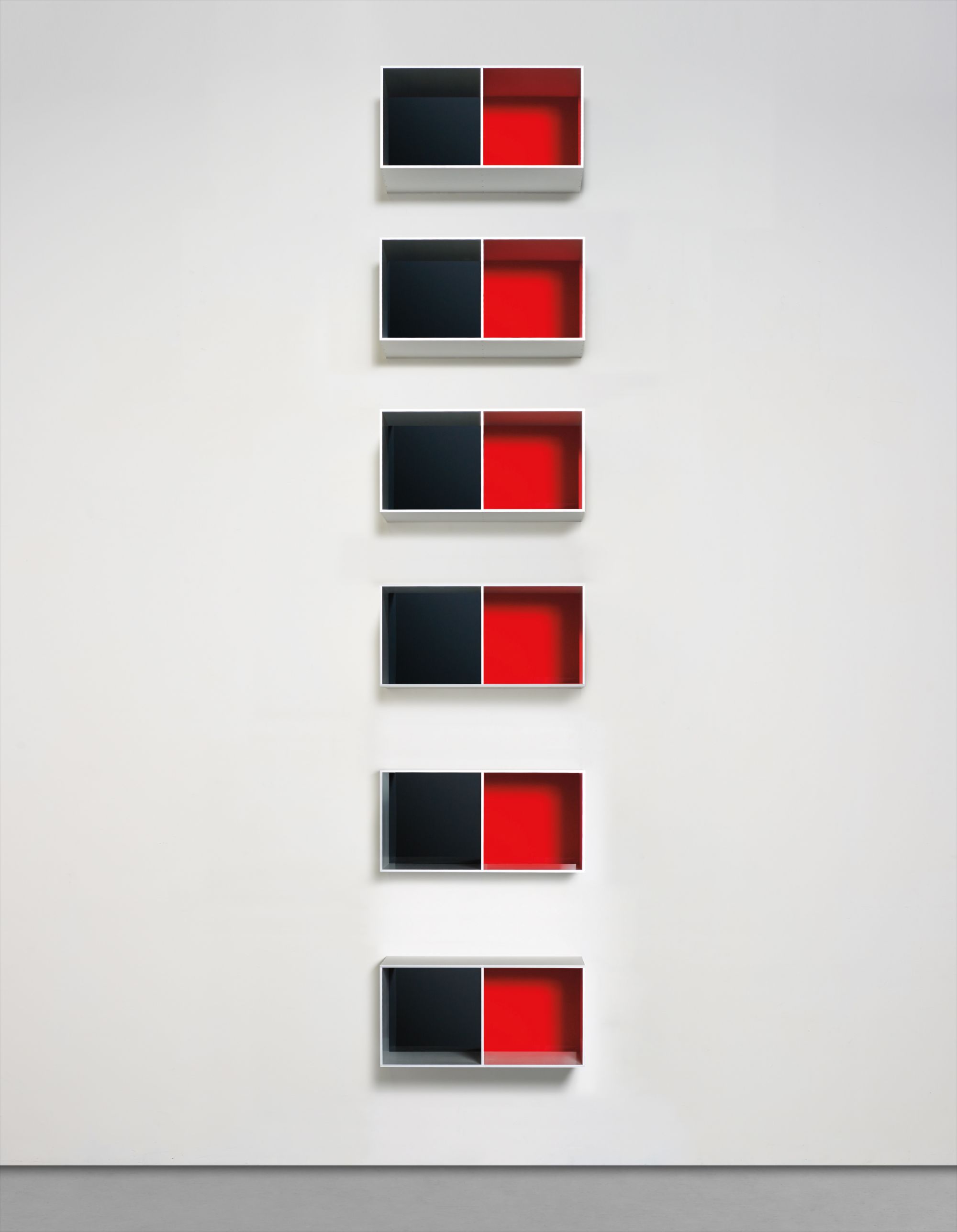

19
Donald Judd
Untitled (Menziken 88-16)
Full-Cataloguing
Untitled (Menziken 88-16), 1988, stands as a last innovation of the artist’s signature sculptural form—the stack. Judd varied the form of the stack throughout his career, but the fundamental ideas stayed the same, i.e., a work consisting of identical shaped elements, hanging at regular intervals, in which each part was of equal importance. Donald Judd’s artistic goal was to eliminate the pictorial illusion and narrative allusion that had dominated the history of sculpture. The appearance of the present lot is timely as the artist will be honored with a comprehensive retrospective at The Museum of Modern Art in New York in 2017. This will be Judd’s first museum survey in the United States since 1988, the year of the present lot’s creation.
For the Menziken series Judd used Swiss-manufactured aluminum, achieving an even, matte sheen, one that reflects light with elegance and subtlety. The repetition of engineered rectangular containers that compose Untitled (Menziken 88-16) is fundamental to the artist’s notion that the serial ideal was itself a rigorous method of artistic production and not merely a stylistic choice or gesture. Judd’s original stacks of the 1960s more often than not situated color on a horizontal axis at either the top or bottom of the box, which allowed light to project outward. With his series of Menzikens of the 1980s, color is contained within the rectangular interiors. The viewer engages directly with the vibrant hues within each unit; simultaneously, these taut units of color have an emanating presence that reverberates within the larger space they occupy.
From the early 1960s onward Judd favored cadmium red, beginning with oil paint on his constructed objects and later moving towards manufactured red materials. Judd felt that red, in particular, articulated the edges, angles and textures of his incisive forms. The impeccably anodized silver aluminum offers an intriguing contrast to the deeply hued cadmium red on the right side of the boxes. On the left side of each box, the deep black acrylic sheet is boldly amplified by the layering of a green acrylic sheet on top. This work is one of an exclusive and limited number of pieces in which the artist employed this complex layering technique.
Judd recalled from his childhood the symbolic meaning of red and black for the Lakota people of the Great Sioux Nation; these colors also reference Attic vase painting, Maya codices, and contemporary artists Josef Albers and Barbara Kruger. For Judd, the marriage of red and black resulted in a specific visual experience: “In a way, side-by-side, the red and the black become one color. They become a two-color monochrome. Red and black together are so familiar that they almost form a new unity.” (Donald Judd, “Some Aspects of Color in General and Red and Black in Particular,” 1993, in Colorist, Ostfildern, 2000, p. 79) The Menziken boxes capture Judd’s relentless experimentation with new materials, color combinations, scale and form. Untitled (Menziken 88-16) is a quintessential example of Judd’s thoroughly innovative aesthetic: it is austere in form and concept while alluringly sophisticated in its subtle approach to color and its calibrated formal treatment.
Donald Judd
American | B. 1928 D. 1994Donald Judd came to critical acclaim in the 1960s with his simple, yet revolutionary, three-dimensional floor and wall objects made from new industrial materials, such as anodized aluminum, plywood and Plexiglas, which had no precedent in the visual arts. His oeuvre is characterized by the central constitutive elements of color, material and space. Rejecting the illusionism of painting and seeking an aesthetic freed from metaphorical associations, Judd sought to explore the relationship between art object, viewer and surrounding space with his so-called "specific objects." From the outset of his three-decade-long career, Judd delegated the fabrication to specialized technicians. Though associated with the minimalist movement, Judd did not wish to confine his practice to this categorization.
Inspired by architecture, the artist also designed and produced his own furniture, predominantly in wood, and eventually hired a diverse team of carpenters late in his career.